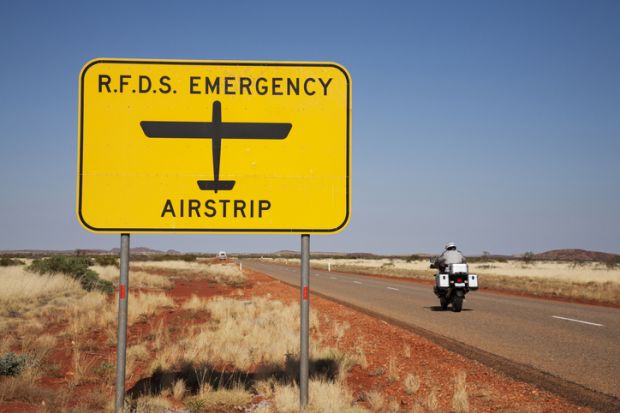Medical degrees are emerging as an issue in Australia’s forthcoming election, as the government battles to address a perennial shortage of health services in the bush.
Authorities have revealed that several schemes designed to bridge the gap, by bankrolling trainees’ medical studies in return for their commitment to work outside the cities, have barely had an impact.
Fewer than 600 of more than 13,500 participants in the schemes, which stretch back to 2001, have so far fulfilled their “return-of-service” obligations.
Meanwhile, new promises to fund the training of medical students in rural Australia – on the rationale that doctors who learn their profession in the bush are likely to build their careers there – have not satisfied universities.
The Group of Eight (Go8) has argued that the only way to avert “a looming medical crisis”, including further depletion of health services in the bush, is to educate at least 1,000 extra Australian doctors every year.
“As the demand for medical graduates increases, our medical workforce shortage disproportionately impacts regional, rural and remote Australians,” the Go8’s policy paper says. Newly minted doctors are “more likely” to take jobs in the cities, further exacerbating the lack of health professionals in country areas.
The consequences have been laid bare in testimony to the Senate’s community affairs committee, which heard of patients “waiting months or even a year” to see general practitioners. Many practices had “closed their books” to new clients and found it “virtually impossible” to recruit new doctors.
The March federal budget included measures to boost medical training in regional areas, including A$51 million (£30 million) for two new university departments of rural health in Western Australia and a rural clinical school in New South Wales. The government has since issued an election promise to spend another A$146 million “to inject more doctors and allied health professionals into regional and rural communities”.
But experience through the Bonded Medical Programme, and its predecessors the Bonded Medical Places Scheme and the Medical Rural Bonded Scholarship Scheme, shows just how difficult this can be.
The schemes guarantee participants government-funded places in medical degrees, saving them about A$109,000 in fees. One of the superseded schemes also offered scholarships of about A$26,000 a year.
In return, participants are required to work for either three or six years in regional health settings. For students who signed up between 2016 and 2019, this requirement was dropped to just 12 months of country service.
Despite such concessions, only 597 participants have fulfilled their rural service obligations over the schemes’ 21 years. Another 779 have opted out of the schemes, with many choosing to repay the benefits.
Over 12,000 participants remain “active” in the schemes, with the rules allowing them up to 18 years to fulfil their regional service obligations. “There are very few people who accept a bonded medical place who actually end up working as a medical practitioner in a rural or regional area,” the Senate committee concluded.
This is not a new realisation. The National Rural Health Student Network, which surveyed its members about the schemes in 2016, uncovered anecdotal accounts that many intended to “buy their way out”.
The survey found that participants’ initial intentions to fulfil their obligations gradually eroded. “Students change their opinions as their careers progress and lifestyle circumstances change,” the researchers reflected.
Register to continue
Why register?
- Registration is free and only takes a moment
- Once registered, you can read 3 articles a month
- Sign up for our newsletter
Subscribe
Or subscribe for unlimited access to:
- Unlimited access to news, views, insights & reviews
- Digital editions
- Digital access to THE’s university and college rankings analysis
Already registered or a current subscriber? Login








